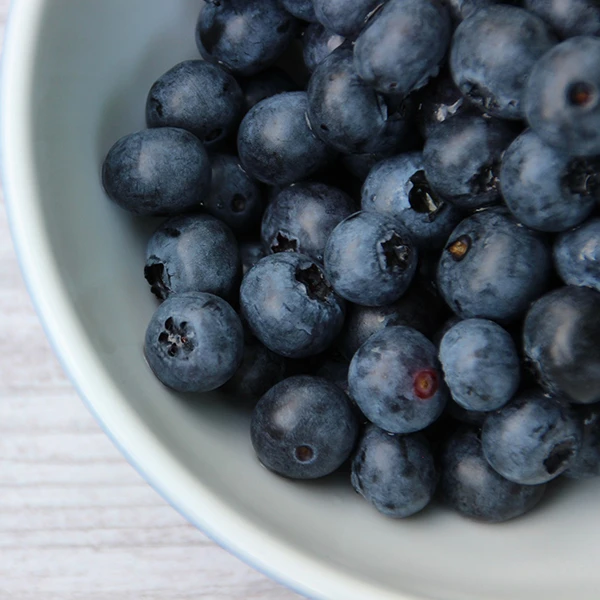Is It True That There Are No Blue Foods?

Using a state-of-the-art Konica Minolta spectrophotometer for color measurement, we found out that it is, in fact, true: no blue foods (that we know about, anyway) exist.
Are shrimp more blue than blueberries? Using a state-of-the-art Konica Minolta spectrophotometer for color measurement, we found out that it is, in fact, true: no blue foods (that we know about, anyway) exist.
If you look around at all the foods out there, you might not come to the same conclusion. What foods, then, can you name that you consider to be blue? Most people will start with blueberries, because the fruit looks blue and the word blue is in its name.
True color measurement can’t be performed with the human eye. There are too many variables in how people both see and perceive things. Plus, human eyes are known for possibly being color blind, which rules out any chance of accurate measurement of several or all colors. Only a spectrophotometer will give us true data on colors, every time.
In a video called Konica Minolta Sensing & the Food Detective, from The Food Network, we wondered about blue foods. It seemed that blueberries were blue along with certain kinds of fish. There are potatoes called “blue potatoes,” and we all know about blue corn chips. Yet we discovered in the video that there truly are no blue foods.
We talked in the video with Megan Miller from Popular Science magazine, who said that experts think the foods we consider “blue” actually lean more toward purple. This proves that color measurement tasks aren’t best done with the naked eye.
Megan and the host of the episode, KM’s Randy Kilmek, looked at a number of foods that are traditionally thought to be blue. Megan explained the basic principle behind spectrophotometry that she was about to use: “White light is comprised of all colors in the spectrum, and when that light hits an object, whatever color bounces back is the color we perceive the object to be.”
She began color measurement of various foods, and a Konica Minolta color specialist helped to plot the results on a graph that showed a full spectrum of color possibilities. The first food was blueberries. Using a hand-held spectrophotometer, Megan took a reading and on the graph we saw that the color of the fruit didn’t go very far into the blue area.
In fact, only two of the “blue” foods that Megan measured were “bluer” than blueberries: blue crab and blue shrimp.
The point of this video was not to find out if there are true blue foods as much as to demonstrate how a spectrophotometer with pre-set color standards can instantly determine if the correct color is being adhered to in a wide range of color measurement applications.
If you’d like to learn more about Konica Minolta’s advanced spectrophotometers or any other products, feel free to call us at +65 6895 8685, or you can contact us through our website.
About the Author: Alan Chua
Alan Chua is the Assistant Manager of Konica Minolta Sensing Singapore Pte Ltd. Graduated from an electrical engineering background, he is mainly involved in sales, seminar, training and coaching in the field of light and color management. In his 18 years of experience in managing and providing solutions to the many industrial applications, he has also conducted color seminars and workshops to educate the industry on instrumentation technologies and color science. He was also invited as speaker for The Academy of Fashion Professions (TaF.tc) seminar which is the training arm of Textile & Fashion Federation (TaF.f). He was also the speaker for the Color Cosmetics Conference.

